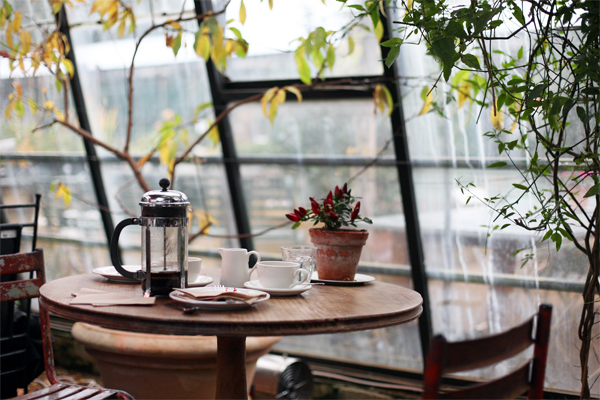
When you indulge in your morning coffee, what comes to mind? Most likely, you enjoy the pep up factor, warmth, and delicious aroma.
But however wonderful the sensory enjoyment is that comes from a cup of joe, the beans that you choose can actually have an impact on the environment as well.
A Little Bit of History: Coffee Bean’s Move from the Shade to the Sun
Coffee beans, in their original form, naturally grew in the shade and underbrush of the forest. Essentially, coffee grew as one with the surrounding foliage (posing no threat to the lush abundance that surrounded it).
However, the 1970’s brought a time of change to the bean industry. There was a push to “modernize” in order to increase yields. As a result, coffee and the land it grew on were stripped and clear-cut in order to create large, industrial sun-grown coffee plantations. Farmers also began to utilize commercial pesticides and fertilizers. While yields did increase and grocery shelves are now stocked with a surplus of caffeinated choices, the switch to sun-grown crops came at a cost.
According to the Organic Consumer’s Association, the industrialization approach to growing coffee has led to environmental problems, such as pesticide poisoning of land and air, as well as deforestation. This poses a looming threat to songbirds, who rely on the forest as a migratory habitat. In other words, the bird’s winter homes have been destroyed, while water, land, and air quality have disintegrated – all for the sake of increased coffee yields.
What can a consumer do to enjoy a cup of joe, but also support the environment and songbird population? The answer is quite simple: Consider buying beans that are labeled as “Bird Friendly” by the Smithsonian Migratory Bird Center.
In response to the pervasive clear cutting of forests for sun plantations (and loss of bird’s habitats), the Smithsonian Migratory Bird Center created the Bird Friendly label. This label ensures some benefits for both the consumer and the environment.
Avoid Misleading Labels
Shade-grown methods are the original way in which coffee grew within (and as part of) the forest. Today, many consumers opt for the “shade-grown” label because they feel they’re supporting the environment.
However, All About Birds (a non-profit group that’s linked to Cornell University’s study of bird conservation) points out that the label “shade-grown” is not always up to scratch. Just because beans are shade-grown doesn’t mean they are 100 percent organic, nor does it mean that the shade is quality.
Rather, the website notes that many companies jumped on the bandwagon of using this label as a marketing ploy. In essence, the term “shade-grown” became a popular buzzword.
In fact, according to All About Birds, “this type of coffee can be grown among sparse trees on farms that lack diverse forest structure. Some shade-grown coffee is even grown under only the flimsy cover of banana trees fed artificial fertilizers and pesticides.”
The Importance of the Bird Friendly Label
This is where the label “Bird Friendly” steps in. The Smithsonian Migratory program requires that the plantation (whose coffee beans receive this stamp) must meet rigorous and strict requirements. In order to use the label, a plantation must show that many varieties of native shade trees exist within the plantation. Forest diversity (including proper foliage coverage) means that the forest remains intact so that migratory birds have a suitable habitat. Because plantations using this label follow strict guidelines for biodiversity – that has to be recertified every three years – it surpasses the (sometimes flimsy) label of “shade-grown” with ensured and consistent quality.
Not only does the Bird Friendly label ensure a higher quality of forest and natural habitat for songbirds, but the label also ensures that the beans you are buying are certified organic — which has many positive attributes in and of itself. The certified organic stamp means that soil has to be managed without the use of synthetic pesticides that would normally poison surrounding streams and rivers. As a result, the move to organic methods “helps reduce the billions of pounds of noxious chemicals injected annually into natural ecosystems that support wildlife and communities,” according to the Smithsonian Migratory Bird website.
If you would like to find some Bird Friendly labeled coffee, there are many online retailers available. Alternatively, according to All About Birds, you can now find Bird Friendly Coffee at Whole Foods in bulk and on the shelf.
The views and opinions expressed in this blog post are purely those of the author and does not necessarily represent the views of THM.
Read This Next: 5 Creative Ways to Add Vegetables to Your Diet
